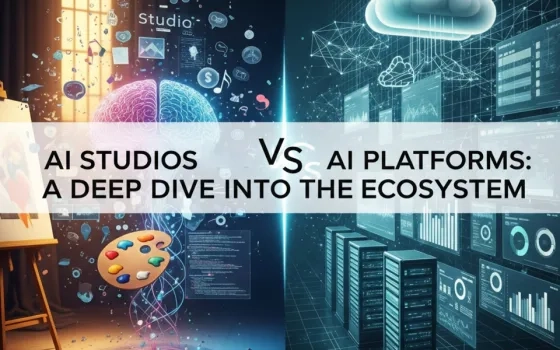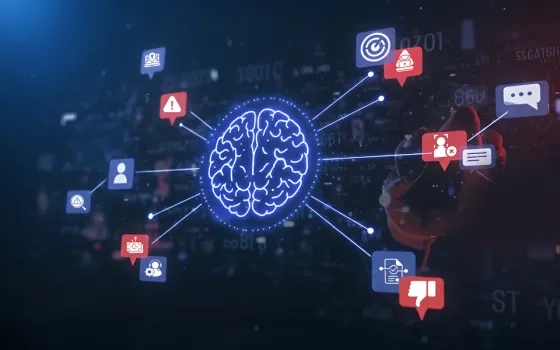When the T-800 first appeared on our movie screens, the world woke up to the idea of ‘Digital in Physical.’ As Skynet’s Terminator took in the surroundings, its futuristic digital vision system led us to a hitherto unexplored domain – one where the synergy of digital technologies with the physical world was no longer a mere pipe dream, but rather a very real aspirational goal.
Since then, the continued evolution of technology, powered by significant breakthroughs in computing and the emergence of the internet, among others, has helped us edge closer to the world that is increasingly defined by the interconnections between the virtual and the physical.
This change is evident in all aspects of our societies and economies. From leveraging remote healthcare services, where a surgeon sitting in a distant part of the world can perform accurate and improved procedures on a patient in another part of the globe, to the simple act of moving towards a cashless economy through digital wallets and payment gateways, the transition is here to stay.
The rise of the silicon chip
New-age digital platforms are redefining the essentially human relations that constitute our understanding of an economy, be they with our employers, employees, or customers. From buying groceries to discussing confidential business ideas, the silicon chip is present everywhere as the ubiquitous enabler, transforming how we approach economic activities in all spheres of life.
The present phase is being driven by the rapid rise of what is called a general-purpose technology, i.e., something that has the power to continually transform itself while branching out and boosting productivity across industries and verticals. Such transformations are indeed rare as to date, there have been only three such instances – the printing press, the steam engine, and the electricity generator. To elaborate, the steam engine, originally designed to pump water out of mines, helped herald a whole new era in the form of machine-powered manufacturing, railways, and steamships. The results helped lay the foundations of the first industrial revolution, an impact that is now being replicated by digital technologies in the Industry 4.0 era.
Adopt, but remember to adapt
General-purpose technology revolutions tend to have an incrementally innovative impact on societies. Given their flexible and pervasive nature, it is no surprise that these technologies are essentially disruptive in nature. We would do well to remember the example of the infamous Luddites in the early nineteenth century, who resisted and tried to destroy machines that were rendering their weaving skill obsolete, even while these very devices were ushering in the requirement for new skills and jobs.
Hence the focus here is not merely to concentrate on adopting the new digital technologies, but also on adapting to it. Ride-hailing services like Uber and Lyft are fine examples of this balanced transition, leveraging the power of digital technologies to transform the age-old paradigm of transportation services.
What we must understand here is that for a disruptive technology paradigm, like the advent of digital in physical, to be adopted by society, there must first be widescale adoptions. The current digital revolution in technology, driven by computers and their adoption, is therefore dependent on the spread of innovation and structural reorganizations to achieve its full potential. A case in point is the time taken to replace traditional print editions with digital publications, underscoring the unavoidable lag before output growth can accelerate toward its full potential. Considering that personal computers really emerged about only 40 years ago, it is no surprise that the benefits of the digital revolution are only just showing up in the productivity statistics.
Again, advancements in computing, particularly in the field of quantum computations, that would facilitate calculations beyond the capabilities of traditional computers, are in the offing. This could in turn render current cryptology standards as obsolete as smoothbore muskets in a World War II battle, potentially leading to a complete reimagination of global communication and privacy standards. While this can pose a threat to cyber security, an increasingly integral aspect of all modern economies, the underlying transformation again could prove to be a key determinant of future prosperity across the globe by redefining the future of services – from engineering R&D to healthcare.
Speeding up to catch up
Digitalization is also changing the nature of people’s jobs on a global scale. According to a report by the McKinsey Global Institute, about a third of the jobs in the US, or about 50 million livelihoods, are set to be transformed by the advent of digital in physical. The study estimated that about half of all paid activities could be transformed by leveraging existing levels of robotics and AI/ML technologies, a trend which has been strengthened by the need for social spacing restrictions imposed by the global pandemic. While views on the impact of this trend may vary, it is clear in the post-normal world that these transformations are already underway, cutting across sectors and salary levels, reaching deep into groups previously thought to be safe from automation.
The rapid global spread of smartphones has been a key determinant in this direction. Inconceivable to the average person at only the turn of the 21st century (just over two decades ago), this handheld device has now transformed our relationship with digital technology. Smartphones have put more computing power in the hands of each of its over four billion users worldwide than what the US National Aeronautics and Space Administration had at its disposal for sending the first man moon. And yet, the vast potential of these mini supercomputers is often unrealized, being consigned to the role of a humble telephone and communication device.
While the spread of digital technologies in all aspects of our daily life continues to grow stronger by the day, fears continue to persist about its speed of adoption – paralleling the anxieties on increasing technological unemployment voiced by the likes of John Maynard Keynes in the 1930’s. But setting these fears aside, there is no turning back now. The way forward lies not in denial, but in devising smart policies that will help maximize the benefits of the technology while seeking to minimize the inevitable effects of short-term disruptions. The focus should be on policies, measures, and adoptable (&adaptable) solutions that can help mitigate the more unsettling changes driven by the digital revolution, rather than throwing a spanner in the works.
Let us take a quick example here. The early 20th-century electrification of the US cities proved beneficial in driving the spread of education in the country, empowering the labor force with the new skills required to make the switch from farm jobs to industries. Similarly, the rise of digitalization should be leveraged to equip today’s workforce with the ability to thrive in a new economy where repetitive cognitive tasks – ranging from driving a highway delivery truck to analyzing a medical scan – are being increasingly replaced by the demand for new skills such as remote-solution engineering and ensuring cyber security.
What defines the magnitude of this digital in physical impact is the speed at which the underlying technology – computers – is being dissipated globally. It is often striking how the so-called less-developed economies are the leading technology exponents in several areas, viz., India in digital land registrations and online payments. In fact, to delve briefly into the Indian example, the demonetization drive of 2016 helped accelerate the overall pace of digital adoption in the country, directing a large segment of the people to move toward digital payment options. The transition had an overarching impact on the economy, and while its direction is still being debated, what is clear here is that a policy measure like the demonetization of certain high denomination currency notes and the subsequent boost towards digital payments has kickstarted a deep transformation of the Indian economy. The impact of transition is being felt at all levels, especially in the form of growing demand for more digital-driven solutions across verticals.
The race to the top
To ensure that we receive the maximum benefits from the global spread of the digital in physical paradigm, we need a framework that emulates the achievements of the cooperation achieved around, say, sea and air traffic. Countries need to realize that digital transformation is here to stay, and identify unified models and methodologies that support, rather than retard, this transformation on a worldwide scale.
Such a cooperation also underscores the role of leading global organizations in helping drive a change in the underlying determinants of technology-led growth. And while the technology continues to grow and evolve, unravelling newer facets of the digital revolution every day, the emergence of a global Skynet like entity with a grip on worldwide economics, albeit a benevolent one, is still something for the future to decide.
Then again, if the T-800 was to land in 2022, it would certainly have faced a different world, one where the digital-physical synergy was no longer a pipedream, but rather a growing reality.



















